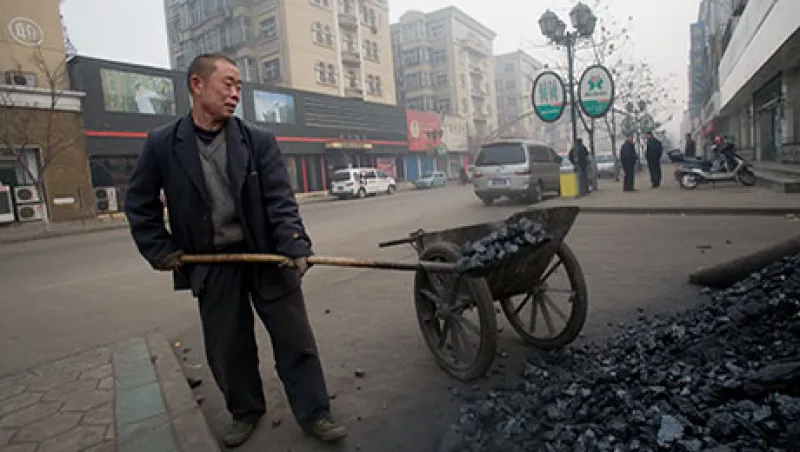It has been 15 years since I first visited China. Then I was speaking on copper markets at a conference organized by the Shanghai Futures Exchange in a brand-new building in the then developing Pudong area of Shanghai. I distinctly remember the slightly deserted, futuristic feel of the area, which appeared to be far ahead of its time. “Has China built too much, too soon?” I wondered as I gazed around the empty atriums.
My most recent visit started, aptly enough, in Pudong in Shanghai — which is now the bustling heart of China’s leading financial district. Over dinner with some Chinese friends working in the metals industry, I learned that whereas there is still money to be made in the country, it is tougher than it was when gross domestic product was consistently growing at a rate of above 10 percent and the government could not do enough to support industrial growth. Now profitability and returns are the primary focus. It is not just Western mining companies that are learning this hard lesson.
As the Chinese government weans itself — and also provinces and state-owned enterprises — off the single-minded focus on GDP growth, it is trying to adapt to a broader focus of more sustainable measures such as unemployment levels, profitability and productivity. Thus banks will no longer lend to companies building new capacity without first wanting to see a strong business plan that analyzes the returns expected. Credit is no longer easy for industrial companies in China. The focus has moved from volume growth to earnings growth. That does not mean there is no volume growth, but rather it is at a slower pace and based on a more sustainable model.
Shanxi province, southwest of Beijing, is the center of China’s coal industry, producing 970 million metric tons in 2014, or approximately 25 percent of China’s total production. A few years ago, with coal prices at record levels, provincial capital Taiyuan, population 4.2 million, was a boom city and expanding rapidly as profits from coal mining flowed, with excess cash being spent on luxury goods and reinvested in property. Now many recently constructed tower blocks are empty or half-finished. That was a clear example of one of the challenges facing the government, as it moves the economy toward services and away from its overreliance on fixed-asset investment. The government has had at least 20 meetings in the past year with coal producers and associations to discuss how to improve profitability and manage debt levels.
The coal industry’s decline means fewer jobs; the sector employs more than 6.1 million people directly. Poorer-quality coal is also a cause of pollution, as it increases emissions from coal-fired power stations. One solution is to put pressure on smaller, poor-quality mines to close while encouraging the larger companies to consolidate and restructure to improve efficiency. Coal imports are also being discouraged, with new regulations requiring details of all trace elements in any imported coal. Even so, it is estimated that it will take as long as two years to restore the industry to a more stable operating base, and growth in output will be limited in that period.
We then traveled to Beijing by high-speed rail, cruising smoothly at 300 kilometers an hour to arrive at the bustling and congested capital. Arriving just toward the end of the annual National People’s Congress (NPC), the sky was blue and pollution levels low, benefiting from the shutdown of heavy industry around the capital over the New Year holidays and during the political confab — the latter yet another reminder that the government sees popular benefits to limiting heavy industry growth.
One day after the end of the NPC meetings in March, the government noted that growth had slowed but recommitted to achieving a 7 percent increase in GDP in 2015. Hints of further monetary easing and infrastructure spending have continued to be dropped, and an oft-repeated refrain was that although the first quarter has been tough, “the government will do something.” Investors in the Chinese stock market, up 38 percent year-to-date, certainly believes as much.
As usual, China remains fascinating, and the country continues to progress at a rapid rate. The transformation under way from fixed-asset investment to consumption growth has government support and is bolstered by popular demands for a clean environment, less corruption and higher living standards. These all bode well long term for a more balanced and sustainable growth model, but it is clearly not an easy change to make. In our view at Investec Asset Management, it also means that demand growth rates for bulk commodities, such as iron ore and coking coal, will slow and could be negative in some years hence. Consumer-oriented metals such as nickel, aluminium and copper should continue to grow at good rates, however, as living standards rise and durable goods orders increase. We believe oil demand will continue to grow, as more cars are sold and road travel increases, and renewable energy investment will continue to accelerate, as pollution remains a big issue.
China’s government has acknowledged that more stimulus is required to maintain reasonable growth, and measures are being announced on a regular basis. Certainly, we would like to see more confidence in the industries we cover before becoming very positive, but we are wary of being too bearish or skeptical. Fifteen years ago, I wondered if China had built too much, too soon. This trip, particularly in Taiyuan, I wondered the same. As the smog descended in Beijing, it was a reminder that it is always difficult to see too far ahead.
George Cheveley is a portfolio manager within the global and commodities and resources teams at Investec Asset Management in London.
Get more on emerging markets.






